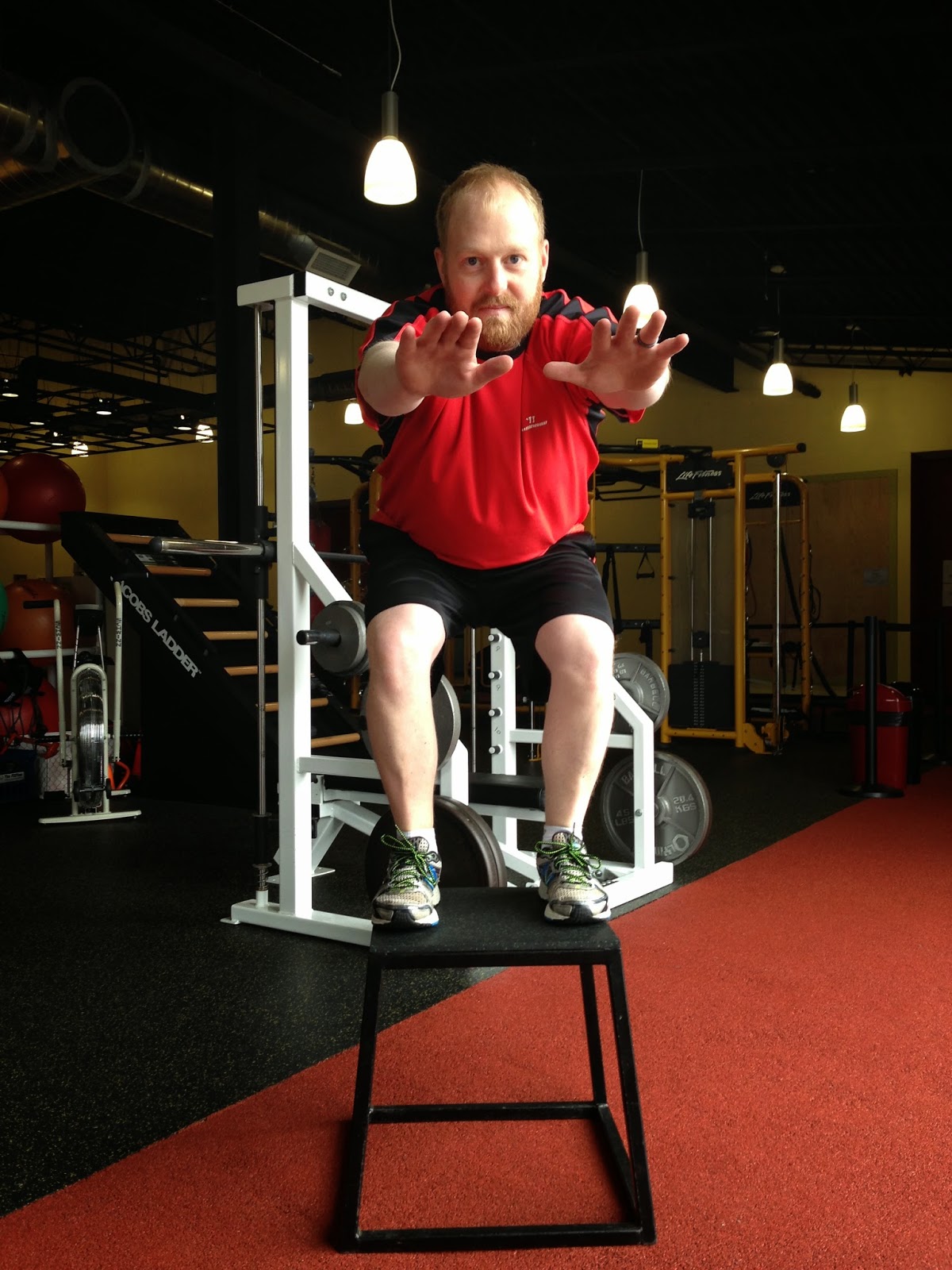 |
| Throwback Thursday: Warrior Dash '11 |
But how do you go about training for a race like this? It involves more than just forward running, with obstacles ranging from wall climbs to electrically charged wire pits to barbed wire you have to crawl under through thick mud. And while going out on distance runs is a good idea to build a nice endurance base for the 3-12 miles you may be running (sometimes up mountains), there are other things to consider adding, both to improve performance, and to avoid injuries on the course. Most trainers suggest at least 7-12 weeks of training for a race--more, if you've never done much like this before.
Rope climbs
Sit on the floor, feet in front, holding the rope in both hands, and pull yourself up to a standing position hand over hand. Then, lower yourself down to the starting position. That's one! These will help you climb up over the walls, and builds upper body strength.Box jumps
Start in an athletic position (shoulders over knees, knees and hips bent), slightly bend your knees and jump onto the box/platform, absorbing the landing evenly in the same athletic stance you started in. Step down, and go again!Monkey bars
Straight from the playground! This is great, since you'll see these on some of the courses, and are great for upper body strength as well.Planks/side planks
Important for core strength, which you'll need when crawling under those wires. Hold a plank position for as long as you can without losing form. Keep adding time as you go along through your training. Don't forget side planks; your middle is made of more than just one muscle.
Blog post by Ashley Crosby.





















